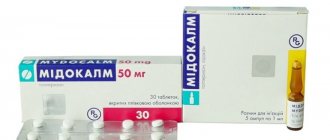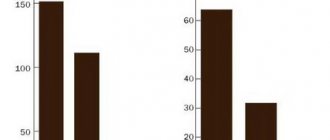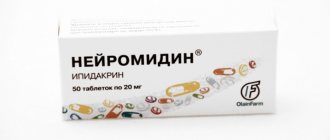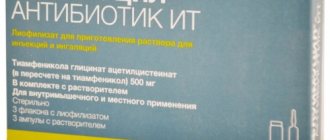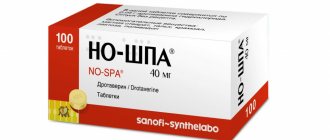Pharmacological action of Adrenaline
Being essentially a neurotransmitter, adrenaline, when introduced into the body, transmits electrical impulses from a nerve cell through the synaptic space between neurons, as well as from neurons to muscles. The action of this biologically active chemical substance is associated with an effect on alpha and beta adrenergic receptors and largely coincides with the effect of excitation of the fibers of the sympathetic nervous system - part of the autonomic (otherwise autonomous) nervous system, the nerve nodes of which (ganglions) are located at considerable distances from the innervated ones. organs.
According to the instructions, Adrenaline provokes a constriction of blood vessels in organs located in the abdominal cavity, blood vessels in the skin and mucous membranes. To a lesser extent, vasoconstriction of skeletal muscles is observed. At the same time, blood pressure levels increase, in addition, the vessels located in the brain dilate.
The pressor effect of Adrenaline, however, is less pronounced than the effect of norepinephrine, which is due to the stimulation of not only α1 and α2 adrenergic receptors, but also vascular β2 adrenergic receptors.
When using Adrenaline hydrochloride, the following are observed:
- Strengthening and increasing contractions of the heart muscle;
- Facilitation of atrioventricular (atrioventricular) conduction processes;
- Increased automatism of the heart muscle, which provokes the development of arrhythmias;
- The excitation of the center of the X-pair of cranial nerves (the so-called vagus nerves), which occurs as a result of an increase in blood pressure, has an inhibitory effect on the activity of the heart, provoking the occurrence of transient reflex bradycardia.
Also, under the influence of Adrenaline, the muscles of the bronchi and intestines relax, and the pupils dilate. And since this substance serves as a catalyst for all metabolic processes occurring in the body, its use:
- Increases blood glucose levels;
- Increases metabolism in tissues;
- Enhances glucogenesis and glycogenesis;
- Slows down the processes of glycogen synthesis in skeletal muscles;
- Helps enhance the uptake and utilization of glucose in tissues;
- Increases the level of activity of glycolytic enzymes;
- Has a stimulating effect on “trophic” sympathetic fibers;
- Increases the functionality of skeletal muscles;
- Stimulates the activity of the central nervous system;
- Increases levels of wakefulness, mental energy and activity.
In addition, Adrenaline hydrochloride is capable of having a pronounced anti-allergic and anti-inflammatory effect on the body.
A characteristic feature of Adrenaline is that its use provides an immediate derivative effect. Since the drug is an ideal cardiac stimulant, it is indispensable in ophthalmic practice and during surgical operations.
Biosynthesis of adrenaline and its transformations in the body
Adrenaline belongs to catecholamines or pyrocatecholamines, which are part of the group of biogenic monoamines. The source of adrenaline formation in the animal body is the aromatic amino acids phenylalanine and tyrosine. The biosynthesis of adrenaline goes through the following intermediate stages: dioxyphenylalanine (DOPA), dopamine, norepinephrine (NA). Tyrosine, preformed in tissue or formed from phenylalanine, is converted into dioxyphenylalanine under the influence of the enzyme tyrosine hydroxylase (required cofactors: reduced pteridine, O2, Fe++); dioxyphenylalanine is decarboxylated by the action of the corresponding enzyme DOPA decarboxylase (with the participation of pyridoxal phosphate), and the resulting dopamine is converted to norepinephrine under the influence of dopamine beta-hydroxylase in the presence of ascorbic acid and oxygen. The last stage of biosynthesis (conversion of norepinephrine to adrenaline) is catalyzed by the enzyme phenylethanolamine-N-methyltransferase (cofactors: ATP, S-adenosylmethionine). Alternative pathways for the biosynthesis of Adrenaline are also possible (through tyramine, octopamine, synephrine or through DOPA, dopamine, epinine). The main pathway for the formation of adrenaline goes through dopamine and norepinephrine - substances that play a significant role in neuro-humoral processes. In the adrenal glands (see), adrenaline or adrenaline and norepinephrine usually accumulate as a hormone. There is evidence of separate regulation of the accumulation and secretion of these two representatives of catecholamines in chromaffin tissue, which are closely related to each other in genesis and function. The resulting hormone is contained in granules in complex with ATP and protein - chromogranin. The ratio of adrenaline to ATP in granules is usually 4:1. Secretion of the hormone is carried out by emptying granules into the intercellular spaces, and this process has the character of exocytosis.
An active stimulator of adrenaline secretion is acetylcholine (the adrenal medulla has cholinergic innervation). The biosynthesis and secretion of adrenaline quickly changes depending on the state of the nervous system in its afferent, efferent and central segments. The secretion of adrenaline increases under the influence of emotions, states of tension (stress), anesthesia, hypoxia, insulin hypoglycemia, pain, and so on. The effect of nervous stimulation on the secretion of adrenaline was first demonstrated in 1910 by M. N. Cheboksarov.
Once in the bloodstream and then into the effector organs, adrenaline undergoes various transformation processes in them (binding by various proteins, adsorption by cell membranes and various organelles, monoamine oxidase and quinoid oxidation, O-methylation, formation of paired compounds). A large place in the metabolism of adrenaline is occupied by the sequential processes of O-methylation under the influence of catechol-O-methyltransferase (COMT) and oxidative deamination catalyzed by mitochondrial monoamine oxidase, with the formation of vanillylmandelic acid as the final product. With the action of only catechol-O-methyltransferase, the end product of adrenaline metabolism is metanephrine, and with the action of monoamine oxidase alone, dihydroxymandelic acid is formed and excreted in the urine. The quinoid pathway of adrenaline oxidation goes through dehydroadrenaline (a reversibly oxidized form of the hormone) to dihydroindole and indoxyl derivatives: adrenochrome (ADH) and adrenolutin (AL), which can have a direct effect on a number of enzymatic processes, have a P-vitamin-like effect on capillary walls, and more.
Some metabolites formed on other pathways of adrenaline metabolism are also functionally active.
Hormone metabolic products triple many of its pharmacodynamic properties (pressor and hyperglycemic effects, etc.) and acquire new ones. They are not only products of adrenaline inactivation, but also biocatalytic factors that play a significant role in the mechanism of its action (A. M. Utevsky). Adrenaline, unlike dopamine and adrenaline, is more easily susceptible to quinoid oxidation than to monoamine oxidase. With thyrotoxicosis, the introduction of corticosteroids into the body activates the deamination of the hormone, changing the pathways of its metabolism, which may have a certain functional significance.
The excretion of adrenaline in urine in humans varies widely depending on a number of conditions [Euler, W. Raab, G. N. Kassil, V. V. Menshikov, E. Sh. Matlina, etc.]. Most of it is excreted in the form of metabolites. According to J. Axelrod, when a human was administered a diluted hormone (H3-adrenaline bitartrate, intravenously at 0.3 ng/kg per minute for 30 minutes), unchanged adrenaline was found in the urine, 6% of the administered amount, free metanephrine - 5%, bound metanephrine - 36%, vanillylmandelic acid - 41%, 3-methoxy-4-hydroxyphenylglycol - 7%, dihydroxymandelic acid - 3%.
Indications for use of Adrenaline
The use of Adrenaline, according to the instructions, is advisable in the following situations:
- In case of a sharp decrease in blood pressure (with collapse);
- To relieve symptoms of a bronchial asthma attack;
- If a patient develops acute allergic reactions while taking a particular drug;
- For hypoglycemia (low blood sugar levels);
- With asystole (a condition characterized by cessation of heart activity with the disappearance of bioelectrical activity);
- In case of insulin overdose;
- With open-angle glaucoma (increased intraocular pressure);
- When chaotic contractions of the heart muscle occur (ventricular fibrillation);
- For the treatment of otolaryngological diseases as a vasoconstrictor drug;
- For the treatment of ophthalmological diseases (during eye surgery, the purpose of which is to eliminate swelling of the conjunctiva, for the treatment of intraocular hypertension, stopping bleeding, etc.);
- For anaphylactic shock that develops as a result of insect and animal bites;
- With intense bleeding;
- During surgical operations.
Since this drug has a short-term effect, to prolong its effect, Adrenaline is often combined with a solution of novocaine, dicaine or other anesthetic drugs.
Contraindications
Contraindications to the use of Adrenaline are:
- Simultaneous use with cyclopropane, fluorotane and chloroform (since such a combination can provoke severe arrhythmia);
- Simultaneous use with oxytocin and antihistamines;
- Aneurysm;
- Hypertonic disease;
- Endocrine disorders (in particular diabetes mellitus);
- Glaucoma;
- Atherosclerotic vascular lesions;
- Hyperthyroidism;
- Pregnancy and lactation period.
Directions for use and dosage
Since Adrenaline is available in the form of a solution, it can be used in several ways: lubricate the skin, injected intravenously, intramuscularly and subcutaneously.
In cases of bleeding, it is used as an external agent, applied to a bandage or tampon.
The daily dose of Adrenaline should not exceed 5 ml, and a single administration should not exceed 1 ml. The product is injected into a muscle, vein or under the skin very slowly and with caution.
In cases where a child needs medicine, the dose is calculated based on the individual characteristics of his body, age and general condition.
In cases where Adrenaline does not have the expected effect and there is no improvement in the patient’s condition, it is recommended to use similar stimulant drugs that have a less pronounced toxic effect.
Determination methods
Many methods have been proposed for the quantitative determination of adrenaline in biological fluids and tissues. Methods based on the biological action of adrenaline were of some importance, but to obtain sufficient specificity it was necessary to compare data from studies conducted on different test objects, which makes such determinations very labor-intensive. Chemical methods based on the production of colored oxidation products of adrenaline or on its ability to reduce certain substances into colored compounds are not specific enough.
Fluorimetric methods (trioxyindole and ethylenediamine) are currently the most widely used. Trioxyindole methods (Euler, V. O. Osinskaya) are highly specific and sensitive.
Osinskaya's method allows, along with adrenaline and noradrenaline, to also determine the products of their quinoid oxidation. There are various modifications of these methods (V.V. Menshikov, E.Sh. Matlina, A.M. Baru, P.A. Kaliman, etc.). The determination of adrenaline in urine, along with the determination of other catecholamines and their metabolites, makes it possible to judge the hormonal link of the sympathetic-adrenal system.
